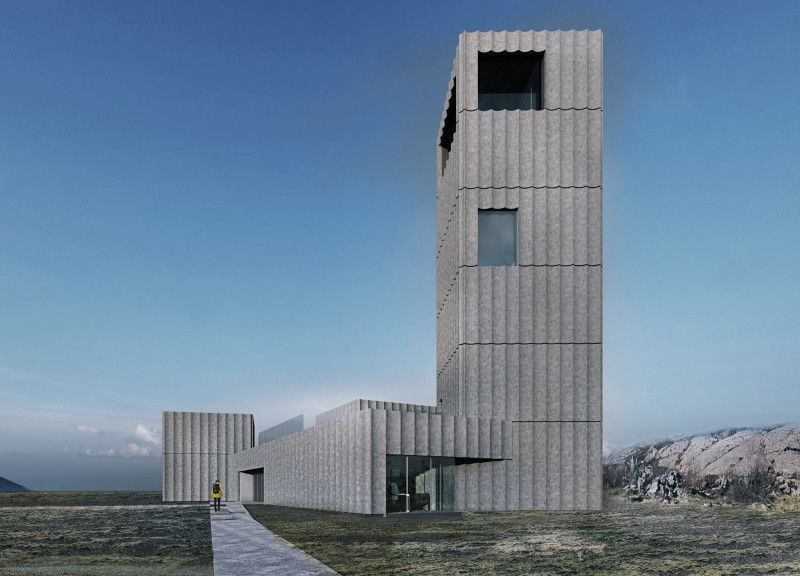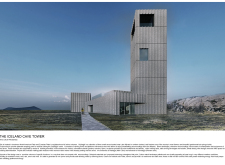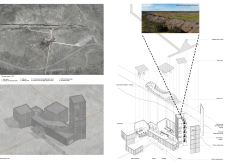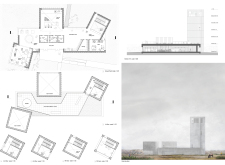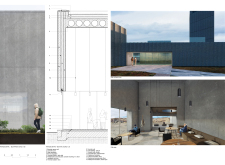5 key facts about this project
Functionally, the structure serves multiple purposes. It acts as an observation tower, enabling visitors to take in vast views of the surrounding terrain while also facilitating access to the nearby caves. The design incorporates a café and visitor management space, ensuring that basic amenities are available to enhance the user experience. The architectural approach is deliberate, emphasizing the need for a structure that not only supports tourism but also complements the environment.
One of the notable aspects of the design is the harmonious use of materials, which include reinforced concrete, green roofs, glass elements, and various insulation types. The choice of reinforced concrete provides durability, enabling the building to withstand Iceland's harsh climate while also allowing for versatile shapes and forms. The exposed concrete finish contributes both to the aesthetics and functionality, creating a texture that resonates with the rugged beauty of the surrounding landscape. Incorporating green roofs serves environmental goals by promoting biodiversity and water retention, thereby tying the structure to its ecological context.
The architectural design strategically optimizes natural light through the use of glass, which enhances the internal space while integrating the indoor environment with the outdoor views. This careful balance ensures that visitors are constantly reminded of the beauty outside, creating an immersive experience that aligns with the overarching goal of the project. The design facilitates natural flow, encouraging exploration through carefully planned pathways that guide visitors as they transition from the parking area to the tower and subsequently to the caves.
Unique design approaches are evident throughout the project. The verticality of the tower draws attention while maintaining a respectful relationship with the landscape. This emphasis on height is complemented by surrounding lower structures, creating a series of interconnected volumes that allow for diverse visual perspectives. The integration of solar panels demonstrates a commitment to sustainability, emphasizing the importance of renewable energy sources in modern architectural practice.
The Iceland Cave Tower is not merely a functional space but a representation of architectural ideas that encourage interaction with nature, resilience in design, and sustainability. It stands out as an example of how thoughtful architectural design can enhance the experience of a natural environment, creating spaces that invite exploration, contemplation, and community engagement. For those interested in delving deeper into the architectural plans, sections, and designs, a review of the project's presentation will provide further insights into its unique features and underlying principles. Exploring these elements will enrich one's understanding of how architecture can harmonize with its environmental context and function effectively within it.


